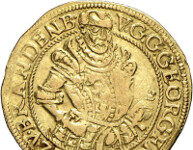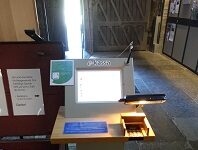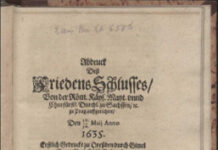Amphitrite’s New Hat: A Coin of the Brettii
The belief systems of the ancient world teemed with beings who were a mixture of human, animal and divine elements. Many of these are so familiar to us that we no longer wonder when we see them. Yet some images are so curious that they demand further investigation.
Human faces, part 35: A girl gets herself a husband
Why was the human head the motif on coins for centuries, no, for millennia? And why did that change in the last 200 years? In this episode, we will witness how a confident Isabella of Castile takes her rightful place on the throne next to her husband.
The royal wedding of Kulmbach
A happy widower, a crossbow shooting and a gold gulden… Find out in this article how coins were used during Renaissance shooting competitions.
Human faces, part 46: “When you call, my Fatherland”
Why was the human head the motif on coins for centuries, no, for millennia? And why did that change in the last 200 years? Get to know more about the story of Helvetia, the personification of Switzerland, in this episode.
Sicilian Mosaic Part 4: Gela
In the early 5th century, entire Sicily focused on Gela and its tyrant Gelon. Here you may gain insight into the coinage of this city in this era.
Numismatic miniatures from the North: Part 2 – Why cashless could work in Sweden
Sweden is different. The mentality of its inhabitants is characterized by an incredible willingness to act rationally at the expense of one’s personal comfort. And as to what is rational, people are quite ready to let themselves be influenced. Here are some thoughts on why the concept of the cashless society might actually work in Sweden.
Human Faces Part 18: A Fine Specimen of an Emperor
Why is it that for centuries – or rather thousands of years – the head has served as the motif for the side of a coin? And why has this changed in the last 200 years? This chapter of the series ‘Human Faces’ looks at the reasons why the attempt to establish national economy in ancient Rome failed.
Human faces, part 29: The Doge, powerless ruler over a mighty empire
That reality and depictions of reality are two different things is a lesson we already learnt in the episode on Constantine the Great. On this coin, the image of the Doge in his pompous attire belies a reality in which he hardly holds any power anymore.
Damnatio ad Bestias, or What Happened to Roman Counterfeiters
As part of Auction 231 comprising “Ancient Art”, Gorny & Mosch presents an object that is a splendid illustration of the history of Roman law. A Terra Sigillata bowl from the 2nd to the 3rd centuries A. D. depicts a damnatio ad bestias. This type of execution was likewise applied to counterfeiters of coins.
The Thirty Years’ War – Part 15 (1635-1637)
Religion was of secondary importance in the Thirty Years’ War. It was all about power and money. Ursula Kampmann brings that era alive. Today, France is in the thick of the action.












